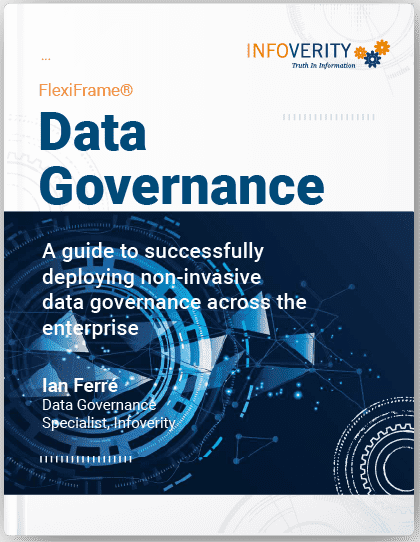Often, companies think of data governance in a parental way, something that’s a nag and a hindrance to freedom and speed, and a burden on their teams. They may even be inclined to dismiss it. But while data governance naturally involves rules, audits, policies and other guardrails, the larger mission of data governance is not restrictive at all. Instead, it can be empowering and can ultimately give a business more room to experiment and make swift decisions while being confident in the underlying data.
When thought of as a mission to create trusted data to make a business run better, data governance becomes exciting. By understanding what data is needed, making sure it is collected, improving quality starting at the source, providing ways to create and publish purpose built collections of data, data governance creates data that the business can actually believe in.
Focus on the Business Outcome of a Data Governance Framework, Not The Limitations
Data Governance Best Practices: Four Ways to Make the Process Work Better for Your Company
Examine your data pipeline. From there, companies should focus on their data flow, understanding where data elements are created, who created them, why they were created, and what governance standards may be in place already. Ensuring the quality of the data at its source prevents problems from arising further down the pipeline as data is cleansed, harmonized, extracted, analyzed and delivered to business users.
Prioritize. What are the most important questions you’re trying to answer? What are the most pressing decisions you need to make? What data is associated with them? Look at what you need or what isn’t working, the level of effort it would take to fix it, and the impact better governance would have. You can then create a roadmap that shows you where to focus your attention and resources first. By starting on smaller projects with big impact, you can build confidence and start to create a culture that embraces data governance.
Create standard definitions and document them. Definitions are critical to making any meaningful improvements. For example, if you do business in Puerto Rico, is Puerto Rico classified as a state or a territory within your data? Are you following international address standards or U.S. address standards? As business users know well, often such obvious problems exist in data sets. A lot of poor data can be fixed by taking the time and effort to define and enforce sound business rules.
Take an incremental approach rather than trying to boil the ocean. Once you prioritize your worst hot spots or biggest opportunities, break the problem down to an atomic level. Problems can be resolved in many ways — better processes, system controls, or retroactive data cleansing and stewardship. For each opportunity, figure out what the short-term and long-term fixes are and implement your plan.
Pathways to Better Data Quality
Data Governance Policies: How to Better Measure Results
To ensure data governance programs are having the impact on the business outcomes the company desires, metrics should be put in place to assess progress. This could include measuring what can be done now that couldn’t have been done with bad data, such as new recommendations and cross or up-sells for customers. Or examining how offers can be better tailored due to better data, driving an increase in revenue.
About Infoverity
For more information on Infoverity solutions, contact us today.


